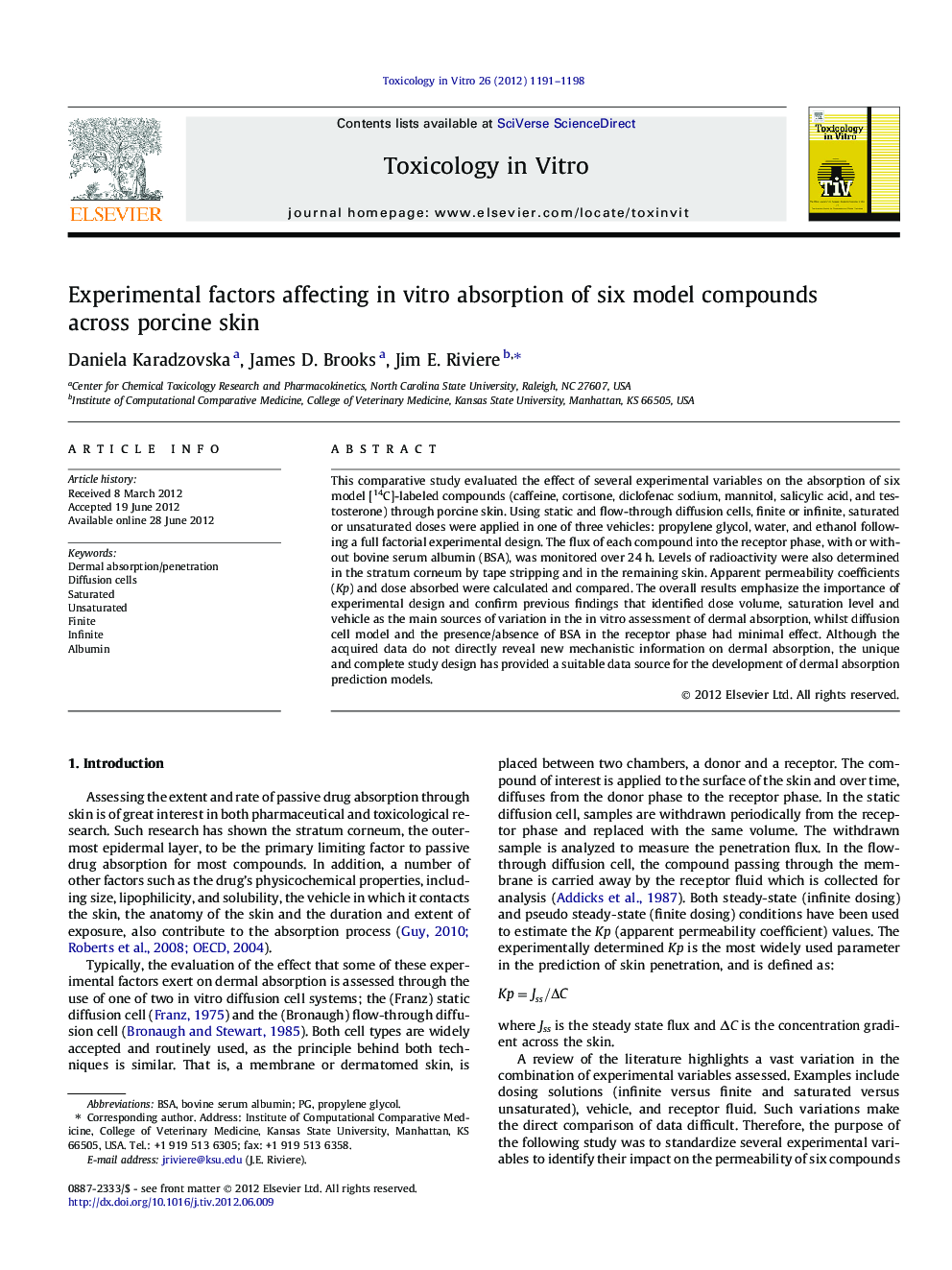| Article ID | Journal | Published Year | Pages | File Type |
|---|---|---|---|---|
| 5863025 | Toxicology in Vitro | 2012 | 8 Pages |
This comparative study evaluated the effect of several experimental variables on the absorption of six model [14C]-labeled compounds (caffeine, cortisone, diclofenac sodium, mannitol, salicylic acid, and testosterone) through porcine skin. Using static and flow-through diffusion cells, finite or infinite, saturated or unsaturated doses were applied in one of three vehicles: propylene glycol, water, and ethanol following a full factorial experimental design. The flux of each compound into the receptor phase, with or without bovine serum albumin (BSA), was monitored over 24Â h. Levels of radioactivity were also determined in the stratum corneum by tape stripping and in the remaining skin. Apparent permeability coefficients (Kp) and dose absorbed were calculated and compared. The overall results emphasize the importance of experimental design and confirm previous findings that identified dose volume, saturation level and vehicle as the main sources of variation in the in vitro assessment of dermal absorption, whilst diffusion cell model and the presence/absence of BSA in the receptor phase had minimal effect. Although the acquired data do not directly reveal new mechanistic information on dermal absorption, the unique and complete study design has provided a suitable data source for the development of dermal absorption prediction models.
⺠Evaluation identifies assumptions to be made when comparing dermal absorption data. ⺠Dose volume, saturation level and vehicle identified as main sources of variation. ⺠Type of diffusion cell system had minimal effect. ⺠Presence/absence of albumin in the receptor phase had minimal effect.
